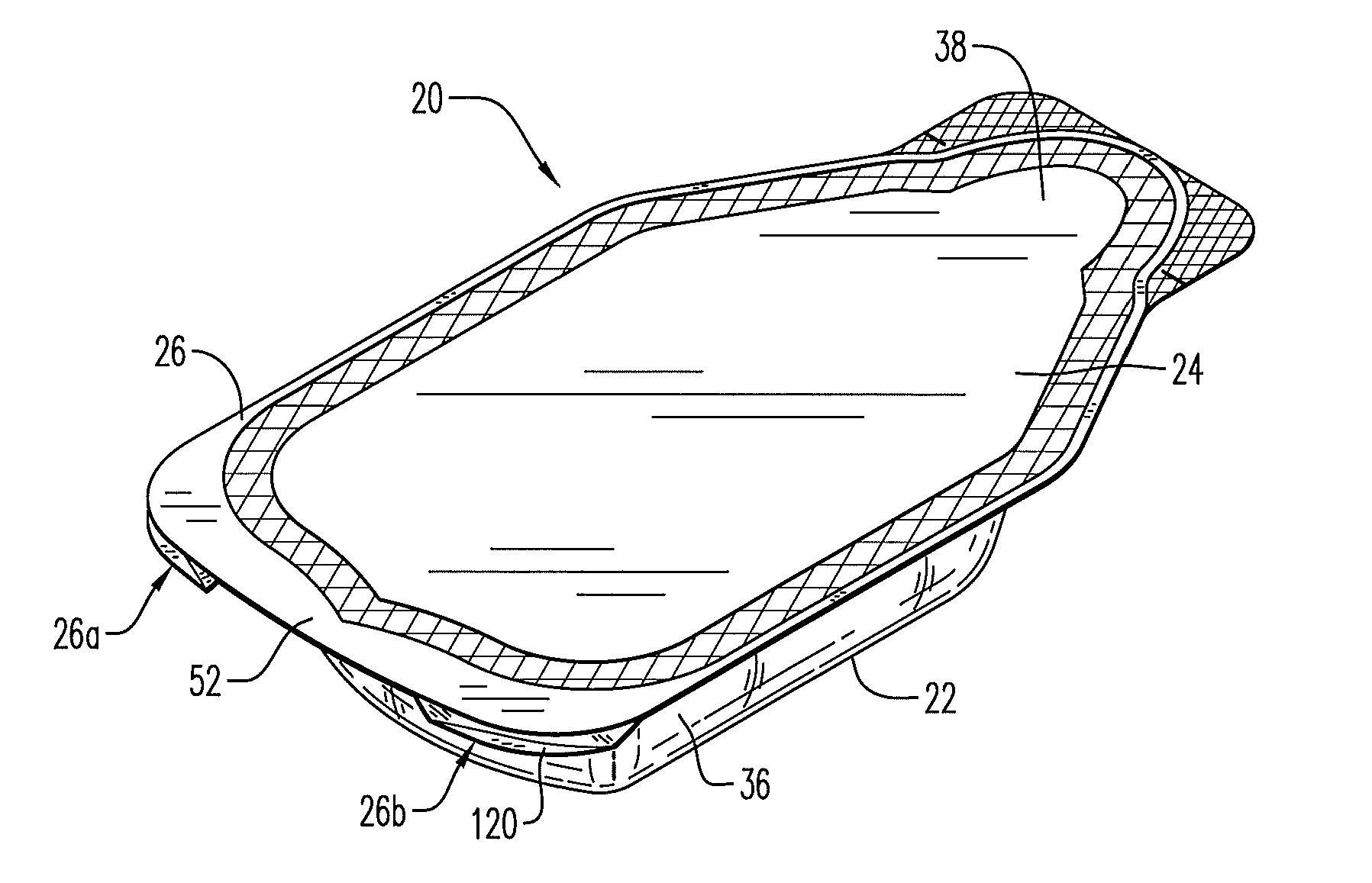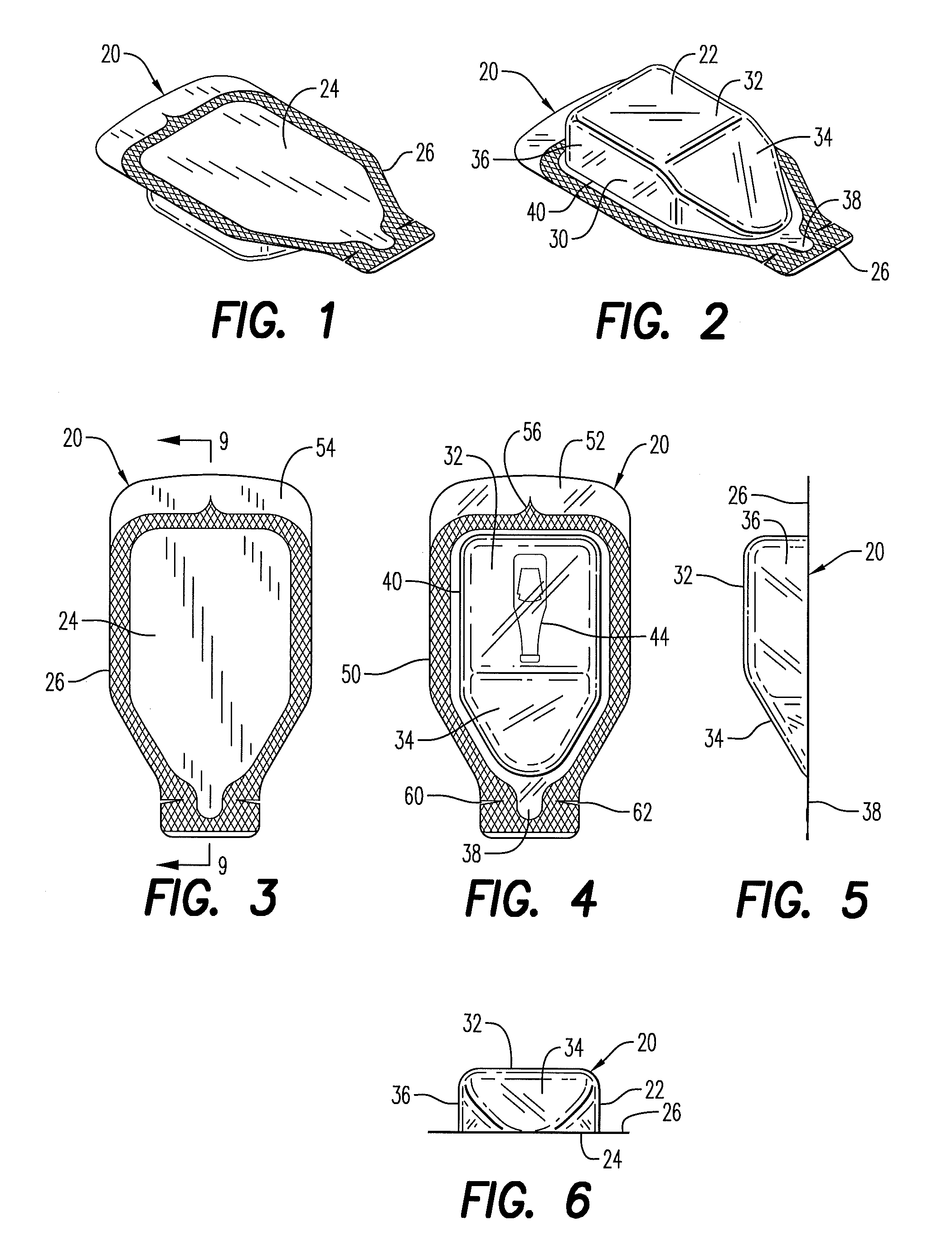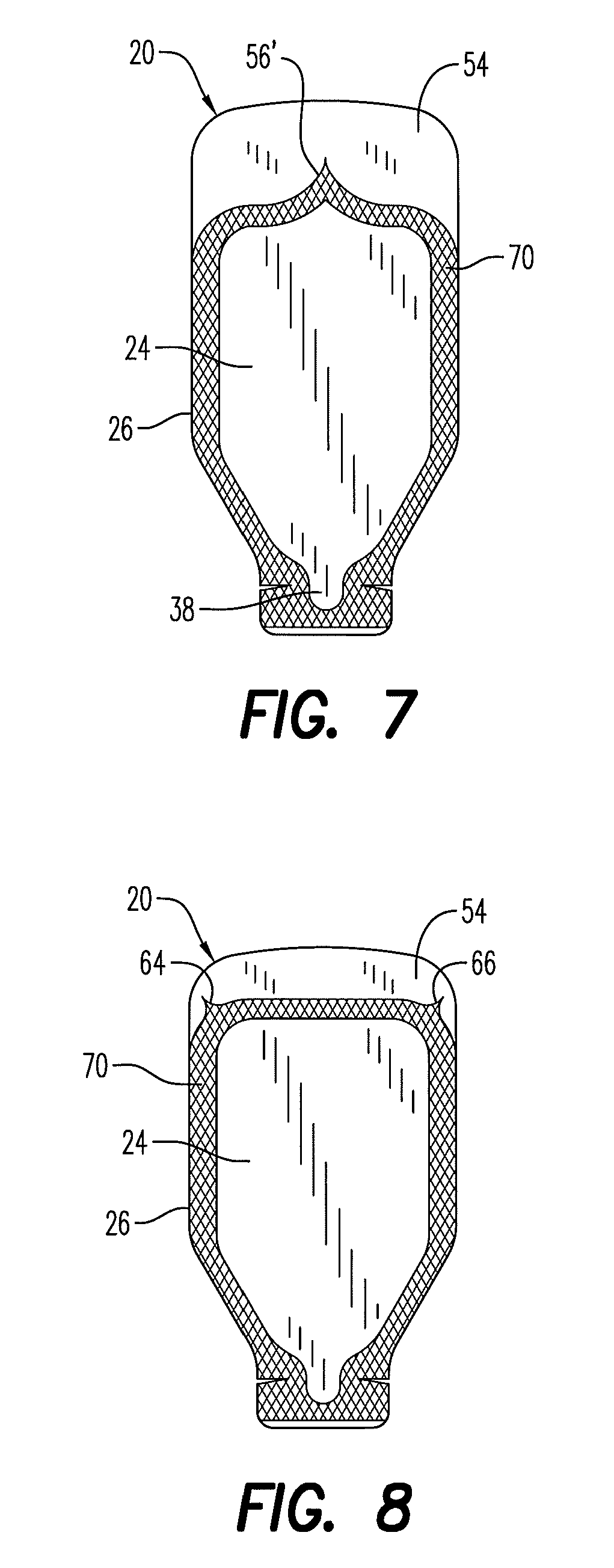Multi-function condiment container
a condiment container and multi-functional technology, applied in the field of condiment packaging, can solve the problems of container messyness, difficulty in adjusting the container, and restrictions on the types of materials, so as to reduce or eliminate the degradation of the condiment packaging, and enhance the grip between the ears
- Summary
- Abstract
- Description
- Claims
- Application Information
AI Technical Summary
Benefits of technology
Problems solved by technology
Method used
Image
Examples
first embodiment
[0072]Turning now to FIG. 1 the condiment container 20 according to this invention is adapted for marketing, and delivery to a consumer as an individual portion of a condiment. The condiment container 20 is formed by a container or cup portion 22 (see FIG. 2) and a lid or cover portion 24 (see FIG. 1) which are sealed together by an adhesive along a flange 26.
[0073]The lid portion 24 is preferably fabricated from a material selected from the group consisting of polyethylene terephthalate (PET), amorphous polyethylene terephthalate (APET), oriented polyethylene terephthalate (OPET), polyester (PE), low density polyester (LDPE), linear low density polyester (LLDPE), metalocene linear low density polyester (mLLDPE), high density polyester (HDPE), metalocene polyester (mPE), ethylene vinyl acetate (EVA), polypropylene (PP), high impact polystyrene (HIPS), foil, ethylene vinyl alcohol (EVOH), polyimide, Nylon, polyvinyl chloride (PVC), and combinations thereof. Where foil is used, that f...
seventh embodiment
[0109]An additional advantageous feature of the seventh embodiment shown in FIGS. 28-40 relates to a configuration of the container sidewall 36 which facilitates compact packaging of a plurality of the containers, for example, in a carton or other packaging device. In that regard, it is desirable to compactly package and transport the containers 20 in such close proximity to one another that the flanges of adjacent containers overlap one another, as shown in FIGS. 37-40. As can be seen in those figures, first and second containers 20a and 20b are arranged with their spouts in alignment in the longitudinal direction Z. The spout 38 of the first container overlies the rear portion of the second container 20b. Additional third and fourth containers 20c and 20d are also arranged with their spouts longitudinally aligned. The third and fourth containers are also disposed adjacent the first and second containers 20a, 20b, respectively, in a lateral direction Z′ with respect to the longitud...
eighth embodiment
[0114]The eighth embodiment, depicted in FIG. 41, shows that the front portion 36a of the sidewall can be inclined relative to the plane of the flange, essentially in the longitudinal direction Z, such that an acute angle is defined between the plane of the front portion 36a and the plane of the flange. Such an arrangement may, for example, be desirable in applications where it is desired to more securely lock or otherwise position the aligned adjacent ends of containers.
[0115]Turning briefly to FIG. 29, a score line 110 may be applied to the container lid or to the container bottom using a laser. For many materials, the score line can be applied mechanically, by laser, and / or by any other suitable means. In some applications where APET is used as the material, mechanical creasing or scoring is not preferred because APET tends to be brittle and may inadvertently break and because the APET material is not planar in the region of the spout. The laser score line 110 may be applied to a...
PUM
| Property | Measurement | Unit |
|---|---|---|
| weight | aaaaa | aaaaa |
| thickness | aaaaa | aaaaa |
| thickness | aaaaa | aaaaa |
Abstract
Description
Claims
Application Information
 Login to View More
Login to View More - R&D
- Intellectual Property
- Life Sciences
- Materials
- Tech Scout
- Unparalleled Data Quality
- Higher Quality Content
- 60% Fewer Hallucinations
Browse by: Latest US Patents, China's latest patents, Technical Efficacy Thesaurus, Application Domain, Technology Topic, Popular Technical Reports.
© 2025 PatSnap. All rights reserved.Legal|Privacy policy|Modern Slavery Act Transparency Statement|Sitemap|About US| Contact US: help@patsnap.com



